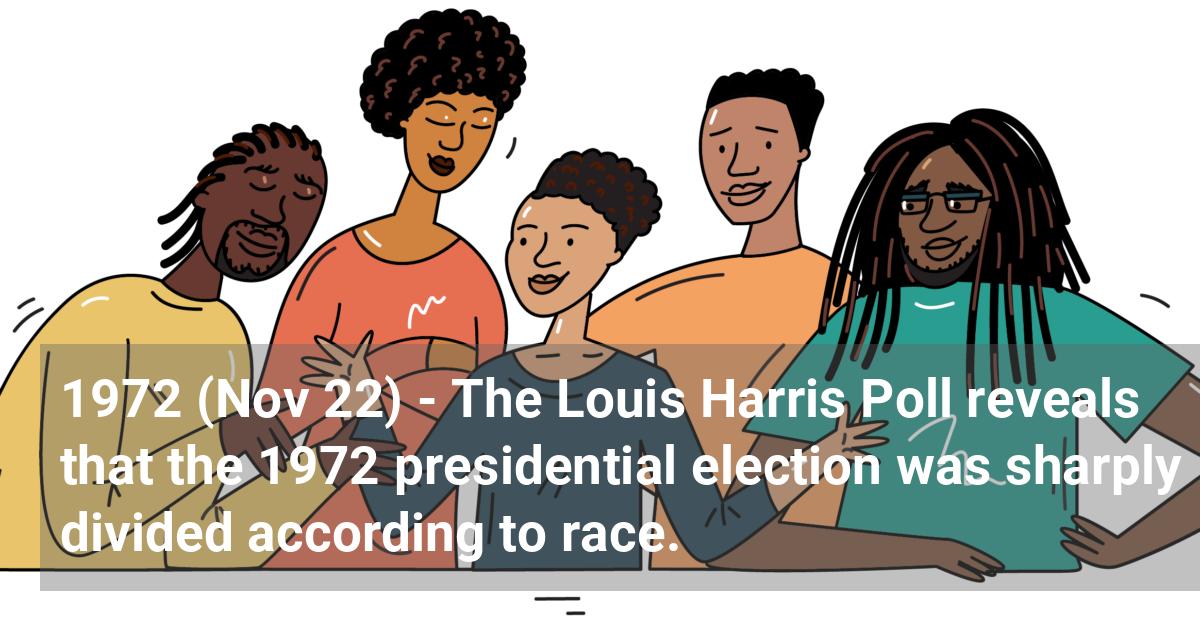Home / Full timeline / The Louis Harris Poll reveals that the 1972 presidential election was sharply divided according to race.
 The Louis Harris Poll reveals that the 1972 presidential election was sharply divided according to race.
The Louis Harris Poll reveals that the 1972 presidential election was sharply divided according to race.
1972 (Nov 22)
The Louis Harris Poll, a major survey of public opinion, announced that the sharpest division in the 1972 presidential election was according to race, with Blacks voting 79-21 percent for Senator George McGovern while whites voted 67-33 percent in favor of President Nixon. The survey went on to say that in terms of their political inclinations and in their outlook on American issues, Blacks and whites have rarely been so far apart. The survey cited such examples as the Blacks' overwhelming preference for racially desegregated schools (7812 percent) as against a plurality of 46-43 percent among whites. While roughly 50 percent of the Black population endorsed busing to achieve school desegregation, only 14 percent of the nation's whites approved of this method to dismantle separate schools. Also, nearly 80 percent of the nation's Blacks, versus 46 percent of whites, supported increased federal assistance for poverty-stricken Americans. The Harris Survey reflected racial attitudes as of Thanksgiving Day, 1972.
References:
- • Hornsby, Alton. Chronology of African-American History: Significant Events and People from 1619 to the Present. Detroit: Gale Research, 1995.
